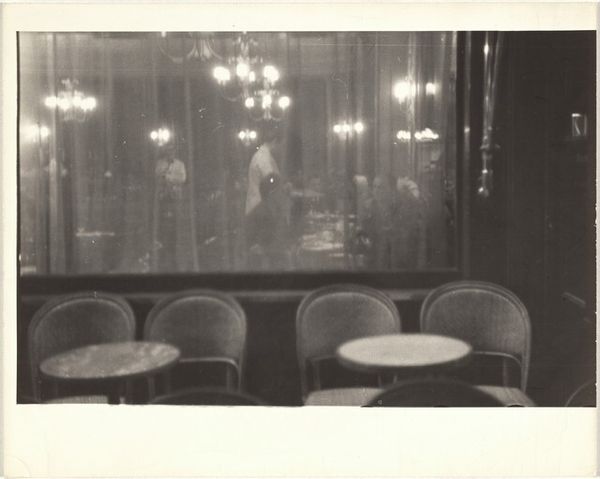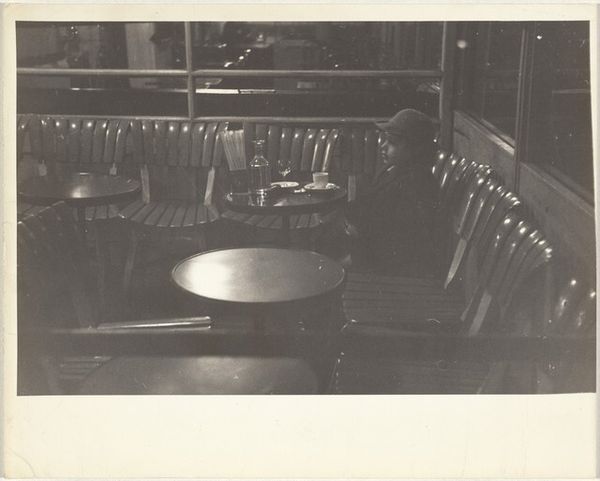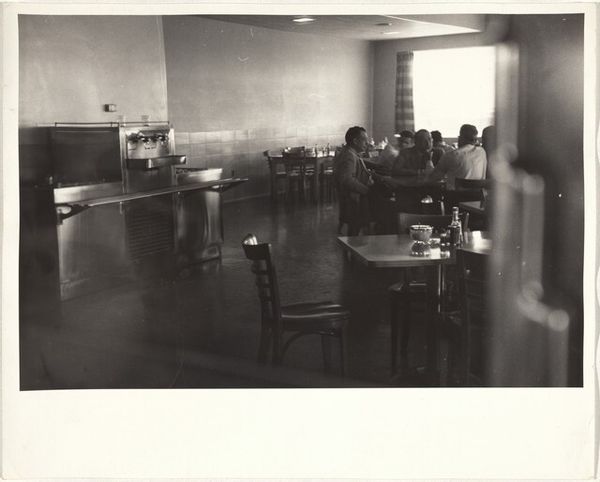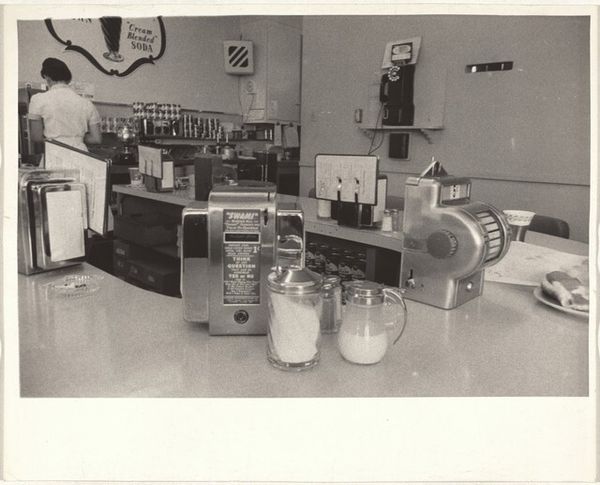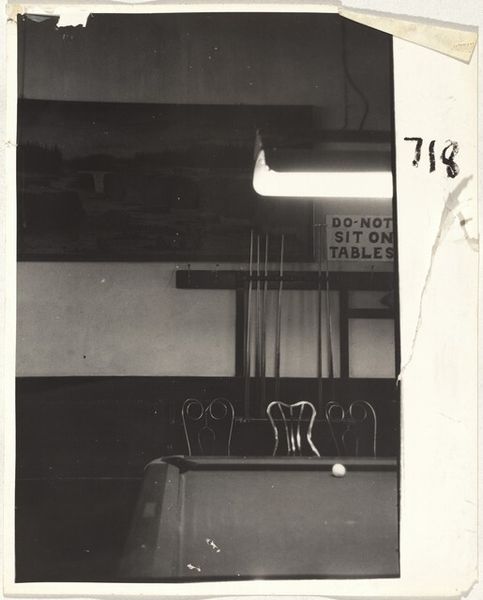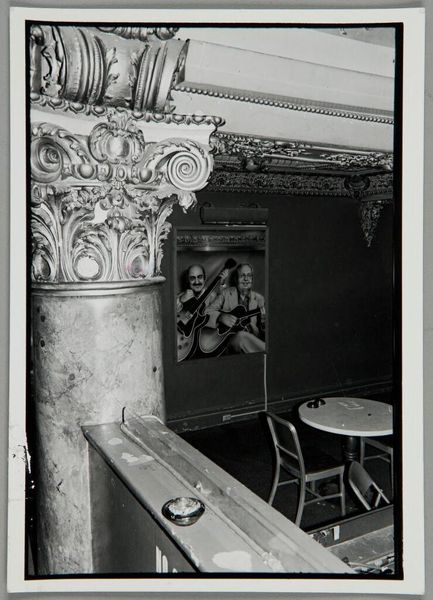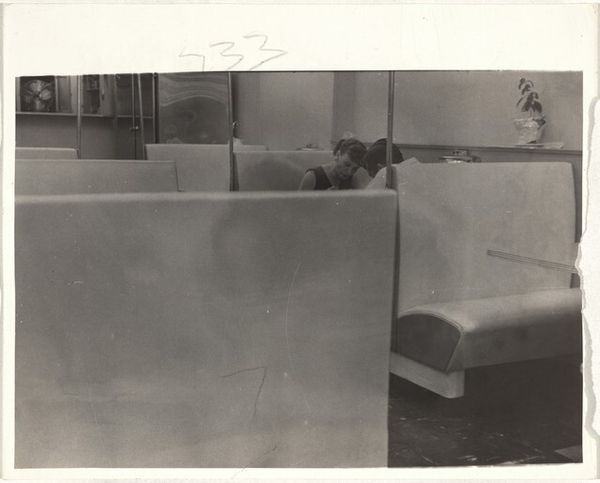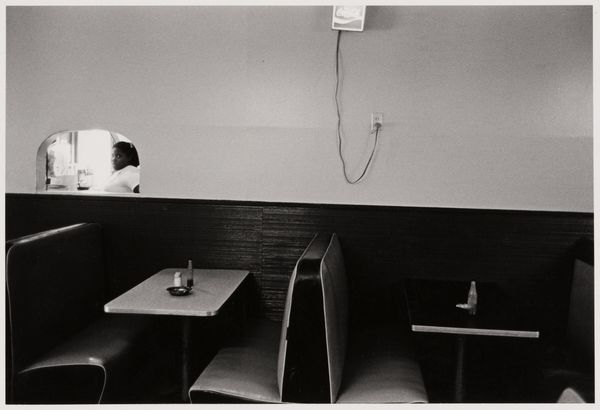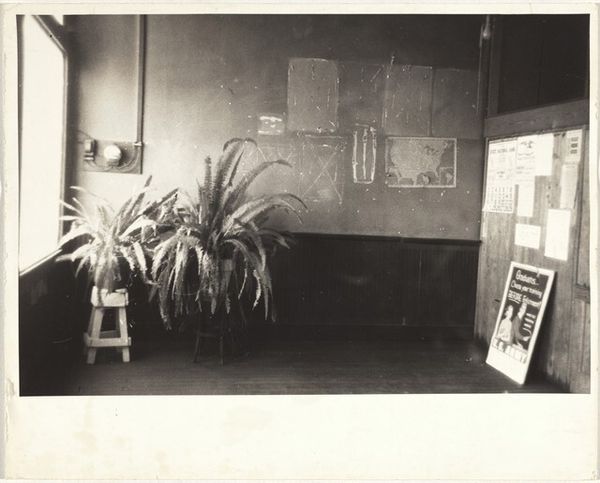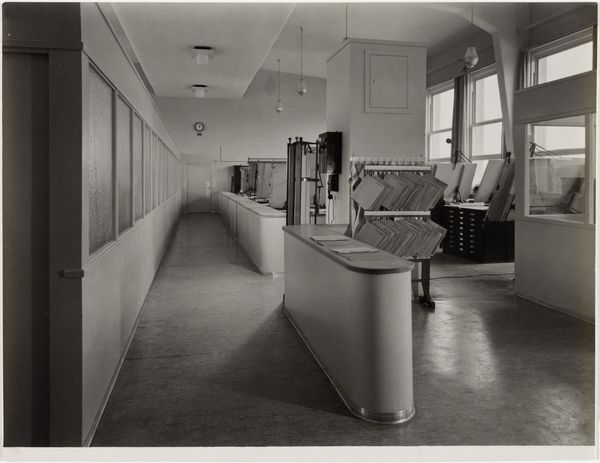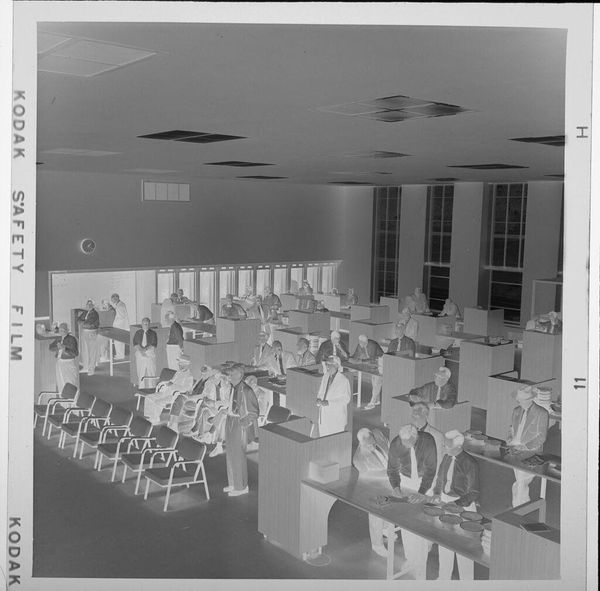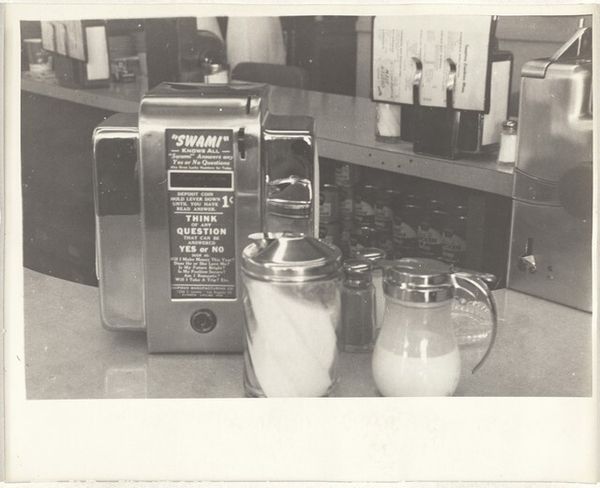
print, photography, gelatin-silver-print
#
print photography
#
film photography
# print
#
landscape
#
street-photography
#
photography
#
gelatin-silver-print
#
ashcan-school
#
realism
Dimensions: sheet: 20.2 x 25.3 cm (7 15/16 x 9 15/16 in.)
Copyright: National Gallery of Art: CC0 1.0
Curator: Robert Frank's "Coffee shop--Casper, Wyoming" made in 1956, offers a glimpse into a seemingly ordinary American scene. It’s a gelatin silver print. Editor: The atmosphere immediately strikes me. There's this overwhelming feeling of isolation despite the diner setting. The stark blacks and grays deepen the melancholy. Curator: Frank's photographs often portray a sense of alienation, challenging the idealized post-war narrative. We see the iconic diner stools receding into darkness. It’s very Ashcan School, finding beauty or at least significance, in everyday urban grit. Do you feel a symbolic weight in this framing? Editor: Absolutely. The empty stools and the lone figure hunched over in the booth symbolize a deeper sense of disconnection, particularly when read in the context of Frank's broader project, "The Americans." This wasn't the picture postcard vision. Consider that during this time there was pressure to fit in, to present a homogenous ideal, and Frank presents this alternative viewpoint of not everyone feeling they belonged to this image. Curator: There's a stark realism, absent any artificial drama or heightened emotion. That one figure in the corner becomes monumental. His stance is universal and recalls centuries of paintings that involve isolated suffering and internal contemplation. What of that specific figure's placement and meaning within the frame? Editor: It reads like a critique of American society and the myth of the "American Dream" - the undercurrent of anxiety that shadows these people. The diner, usually a social hub, becomes a place of solitary reflection. This picture freezes a fleeting moment of this disquiet. Frank offers the viewers a truth that may be harsh and less optimistic, but ultimately more real. Curator: Frank has a potent way of presenting simple settings. You’ve really expanded my thinking around the psychological context here. It definitely is heavy with the past even though it represents this diner. Editor: It seems Frank uses his camera almost as a sociological tool. I mean, what is more psychologically potent than that one figure almost dissolving into shadows in the booth in the background?
Comments
No comments
Be the first to comment and join the conversation on the ultimate creative platform.
